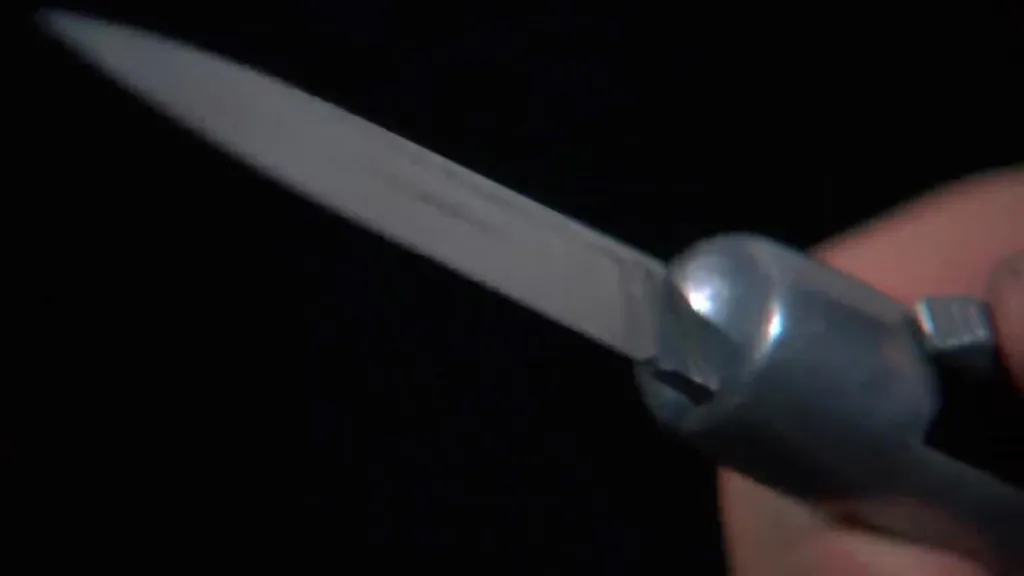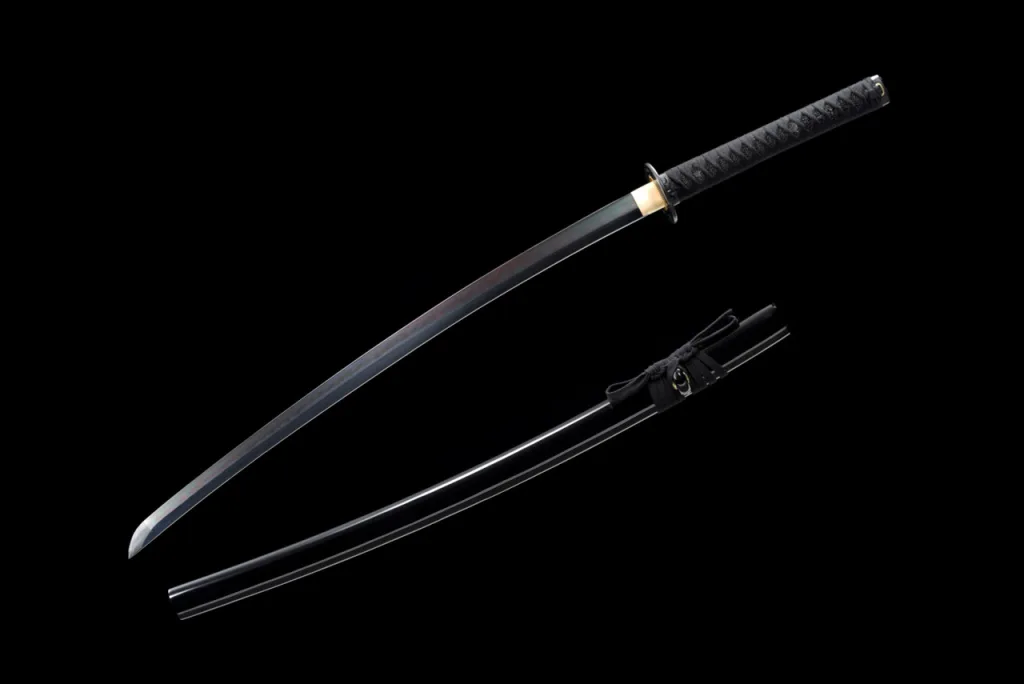The blood groove knife has been around for centuries, but the misconceptions surrounding it still exist. In reality, its purpose has nothig to do with “releasing the vacuum” when thrust into a person or animal. The so-called “blood grooves” are actually fullers, which are used to lighten the blade during forging and smithing.
Fullers, also known as blood grooves or blood gutters, are single indentations in the steel of the blade that make it lighter. While they might look like they’re designed to channel blood, this is not their purpose. Instead, they are simply meant to reduce the overall weight of the knife while maintaining its strength and cutting power. This can be especially helpful in close quarters combat or hunting scenarios where every ounce matters.
While fullers have been around for centuries and have been used on all kinds of knives and swords throughout history, they have become particularly popular with modern-day custom knife makers. Fullers give a unique aesthetic to any custom knife and can be crafted in any number of shapes or sizes depending on the maker’s preference. Some fullers are wide and shallow while others are narrow and deep; some may even be curved or slanted for an interesting look.
Fullers can also be useful for strengthening certain parts of a blade that might otherwise be prone to bending or breaking under pressure. This is especially true when combined with other forging techniques such as differential heat treatment (DHT) which can help create a stronger yet lighter edge than what would otherwise be possible with traditional forging methods alone.
So while there is no denying that fullers (or blood grooves) look cool on a custom knife, their real purpose is much more practical than many people think. They provide an effective way to both lighten a blade without sacrificing strength as well as strengthen certain parts of it for added durability – all without adding any unnecessary bulk or weight to your knife!
The Blood Groove on a Knife
The blood groove on a knife is not actually called a blood groove, but rather a fuller. A fuller is an indentation that is forged into the blade of the knife to reduce its weight and improve its balance. It does not have any functional purpose in terms of channeling or controlling blood flow.

What Is the Origin of the Term ‘Blood Groove’ for a Fuller?
A fuller, also called a blood groove, is a groove that runs along the length of a sword blade. This groove reduces the weight of the blade wthout compromising its strength and is used to add decorative detail to the blade’s design. It has no function in releasing a vacuum when thrust into a person; this is simply an old wives’ tale. The term ‘blood groove’ originates from its historical association with swords used for warfare or duels where it was sometimes thought that this groove served to prevent blades from becoming stuck in bodies by allowing blood to flow through it and thus reduce suction. However, this is not actually true as any such suction would be minimal and quickly dissipated by air entering the wound.
The Purpose of Blood Grooves on a Katana
The purpose of the blood groove, or fuller, on a katana is to reduce the weight of the blade without compromising its structural integrity. By having a single groove running down the length of the blade, it reduces the amount of steel needed to make up the blade while still providing strength and flexibility. This allows for an easier swing and better control when in use. Additionally, by reducing the weight of the blade, it increases its maneuverability and helps prevent accidental injury due to overswinging.
The Function of Knife Dimples
Knife dimples, also known as hollows or grantons, are indentations that are plaed in the blade of a kitchen knife. They typically form a series of shallow grooves along the edge of the blade and help to reduce food from sticking to the knife during use. This is achieved by creating air pockets between the food and the blade, so that when the knife is pulled through it, the food doesn’t adhere to it. The small pockets also enable smoother slicing and chopping since they help to separate food particles more easily. Additionally, since less pressure is required when using a knife with dimples, there is less strain on your hands over time.
The Bloody Mary Knife: An Overview
A Bloody Mary knife is a 6 inch (150mm) culinary knife with a wa-style octagonal resin handle containing a miniature skull cleaved by a miniature cleaver [KLVR]. This unique and eye-catching design was created by @garmonmade and is perfect for slicing through meat, vegetables, and oher foods. Its blade is made of strong steel, providing long-lasting durability and sharpness. The ergonomic handle is designed to fit comfortably in your hand, making it easier to wield the knife with precision. Whether you’re an experienced chef or just starting out in the kitchen, this knife will make any food preparation task much easier!

The Purpose of a Groove
The purpose of a groove is to provide a channel or pathway for components to move along. They are used in mechanical engineering and manufacturing applications as guides for parts or materials, allowing them to be precisely located and accurately moved. Grooves can also enable the interlocking of parts, providing an additional level of connection and stability. They may be used to accommodate a variety of materials with different properties, such as rigid metals or flexible plastics. In addition, grooves can be used to contain fluids such as lubricants, coolants, and hydraulic fluids.
The Flat Side of a Sword: What Is It Called?
The flat side of a sword is called a “ricasso”. It is the smooth-edged base of the blade located just above the cross-guard. This area of the sword provides an ideal place for a second hand to be placed when using two-handed techniques, allowing for increased control and maneuverability. The ricasso also helps to protect the user’s hand from slipping onto the blade and being injured.
The Function of Jimping on a Knife
Jimping is a series of small notches or filework cut into the back of a knife blade, choil, or other parts of the knife. It is designed to give the user more control and grip when using the knife. The jimping also provides traction for your index finger, so it won’t slip off the back of the blade during use. The jimping can be made in several different patterns and shapes and is usualy cut with a file or saw to give it texture. Jimping can also be used to add aesthetics to a knife and make it look unique.
Can Blood Be Shaken Off a Katana?
Yes, it is possible to shake blood off a katana. This is done using a technique called chiburui, which is part of the Japanese martial art of iaidō. In this technique, the practitioner shakes the blade while drawing it out of the scabbard in order to get rid of any traces of blood that may have been left on it. The motion involves striking the sword agaist one’s forearm or leg while simultaneously making a rapid side-to-side motion with the blade. The force and speed of the motion causes any remaining blood to be flung away from the blade. This technique is performed both as a formality and to ensure that as little blood as possible remains on the blade, which can keep it from corroding over time.

Holding Katanas Upside Down: Exploring the Reasons
People hold katanas upside down because it is the traditional way to wear and carry them. This method of carrying the katana helps to protect the sword’s cutting edge from becoming dull or damaged. When the katana is sheathed, its sharp edge rests against the dull edge of the scabbard, thus protecting it from damage. Additionally, this way of carrying a katana is said to provide an extra layer of protection and security for its wielder. This tradition has been passed down over centuries and remains an important part of Japanese culture today.
The Significance of Carrying Two Katanas for Samurai
Samurai carried two katanas as part of their traditional dress and equipment. The longer of the two swords, known as the tachi, was used for engaging in duels on horseback. The shorter one, called the uchi-katana, was usually slightly longer than a regular katana and was used to deliver the finishing blow when an enemy had been knocked off their horse. This tradition has been kept alive in modern times as both swords are often seen worn together by samurai and other Japanese martial artists.
Conclusion
In conclusion, a blood groove knife is a type of bladed weapon with an indention or channel running along the middle of its blade. This indention is often referred to as a ‘blood groove’ or ‘blood gutter’, however tese terms are somewhat misleading, as it has nothing to do with blood. The purpose of this channel is actually to lighten the blade without compromising its strength or integrity. The fuller, which is sometimes inaccurately called a blood groove or blood gutter, is used to widen the blade during forging or smithing. All in all, this type of knife can be an effective and reliable tool when designed and crafted properly.
